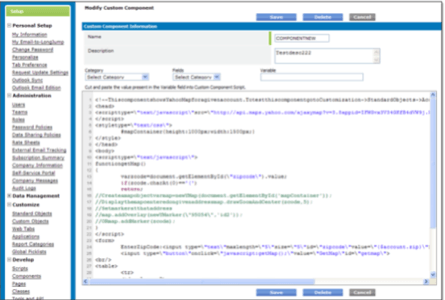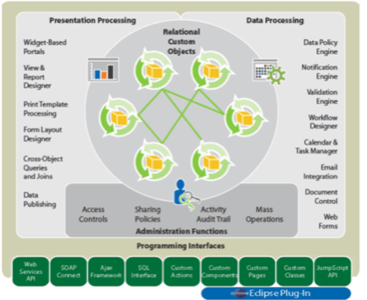New Dev Suite Lets LongJump Work With Other Apps
When LongJump first launched, the PaaS (Platform-as-a-Service) model was only just taking off. Since then, we’ve seen Google launch their App Engine and more services than ever are taking advantage of Amazon’s EC2. Today, the Sunnyvale, California-based PaaS provider, LongJump, tries to one-up those big-name sites with the launch of their new LongJump Development Suite, a tool set that helps developers extend the power of LongJump by allowing interoperability with other systems and applications.

Using LongJump’s PaaS platform, building a new application is entirely code free. Instead, LongJump offers customizable and reusable “building blocks” like objects, scripts, component extensions, business logic, data policies, and workflows, all of which can all be used to easily build what would otherwise be a complex application if coded.

While this ease-of-use made LongJump ideal for enterprise I.T. teams looking for fast and easy ways to build and deploy apps, allowing those apps to interoperate with data from other applications and systems was not possible until now.
About The LongJump Development Suite
With the new LongJump Development Suite, an I.T. department can build the app they need, then use the included visual browser-based UI for data and process modeling. Alternately, they could instead choose to hand of the integration of the app with another system or application to a developer (or team of developers). Finding a developer to work with LongJump shouldn’t be an issue since the suite provided is a Java-based development environment complete with a plug-in to the Eclipse IDE (Integrated Development Environment), something that’s used by 69% of Java developers today. LongJump also provides a set of service integration points using SOAP and RESTful APIs to connect to other external systems.

Why LongJump?
Unlike both Google and Amazon, the focus with LongJump is on application creation, not just the delivery. When you build on Google or Amazon, you still need to know how to build – you need to know code. LongJump is focused on letting anyone build without code. They aren’t the only ones thinking this is the next big trend for the web, either. Earlier this year, for example, we covered an app called Iceberg whose aim was to allow anyone to become a developer.
Will this trend take off? For enterprise I.T. organizations, their bottom-line focus is usually money and time. If PaaS offerings like these mean custom apps can be built quickly and easily without needing to hire outside dev teams, there’s a good chance for their success. However, they do have to fight with a number of already decent solutions out there. Thanks to the Web 2.0/Enterprise 2.0 movement, there are already a slew of business applications built and ready to go. These apps might not be perfect but are often they are often “good enough,” and that’s proven to be a good way to get in the door of the enterprise…just ask Google Docs.

















